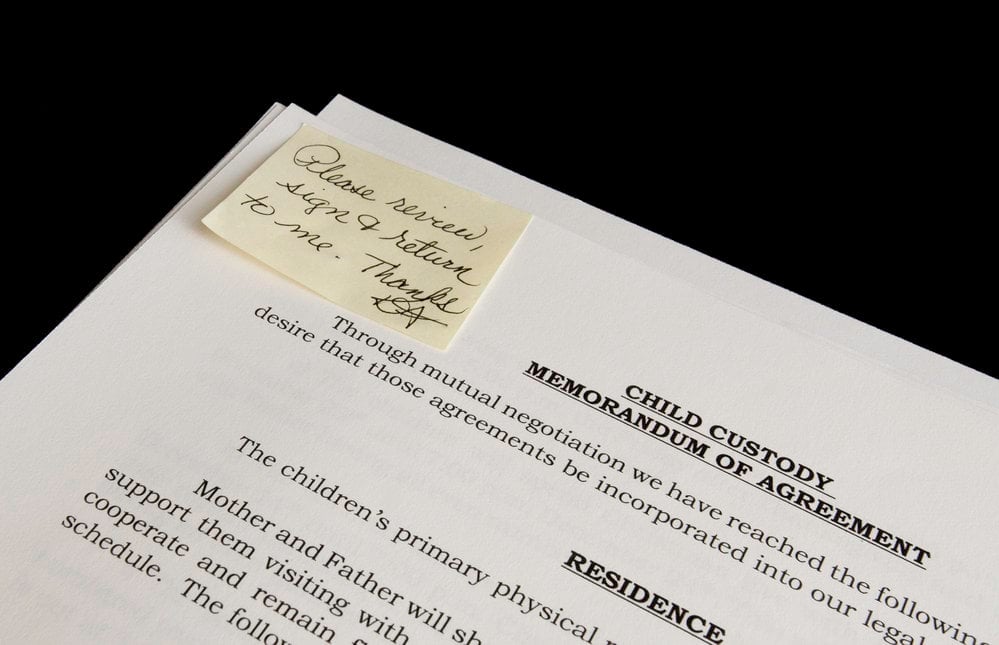No one enters a marriage thinking it is going to come apart one day. Divorces and separations come in all shapes and sizes, but they all share the commonality of being a difficult and often painful experience. Deciding to end a marriage is no easy task, and that can be made all the more difficult by the fact that there are different approaches to ending your relationship with someone.
However, as hard as this must be emotionally, it doesn’t and shouldn’t have to be hard to understand as well. So let’s dive into the difference between divorce and separation so you can determine which option might better suit you and your partner.
Divorce Versus Separation
In the simplest terms, a divorce formally and completely dissolves a marital union. At the same time, a separation involves you and your partner living in different places but retaining some common legal and financial bonds. A separation can function like putting your marriage on hiatus, whereas divorcing your partner ends it completely. A separation typically involves partners moving to different places. However, you can technically do this yourself without getting a formal separation. For that, you’ll often need to get a court to sign off on your decision, and the rules for that can change from state to state. In some states, a separation period may be required before you can get a divorce.
A separation agreement divides up your property and makes arrangements for your children. However, you are still technically married.
Furthermore, in your separation negotiations, you can make provisions for one another that are typically not found in divorces. For example, if you get health care from your work and want to separate but don’t want to deny spousal healthcare coverage to your partner, separation can potentially allow you to keep them on your plan. By contrast, that is often impossible if you formally divorce them and dissolve your marriage entirely.
At the same time, a legal separation allows you to keep healthcare coverage but potentially file your taxes separately instead of jointly.
Religions such as Catholicism do not allow for formal divorces, so depending on your interpretation, a legal separation while remaining technically married may be better for certain religious sensibilities.
For some jobs (such as the military), you need to remain married for at least ten years to claim spousal benefits from your spouse’s line of work. So if you two want to separate but keep the possibility for the other party to claim still those benefits (which can include Social Security benefits), a legal separation to keep you technically married while being romantically separated can allow you to do so.
On the other hand, if you have no reason to retain these benefits for your partner (or if things have grown so acrimonious you no longer wish to help them), a divorce may be better. You can’t marry someone else while legally separated but still technically married, of course, so if you plan to leave your spouse for someone else, you’ll need to get divorced first.
Legal Separation and Immigration
Along with health care, one of the biggest reasons to potentially choose a legal separation over divorce is if the latter would result in legal problems for your partner’s immigration case. However, immigration is already an incredibly complicated subject, and both legal separation and divorce make it even more so.
If you and your partner are already legally separated when you apply or have your interview for a green card, for example, whether this impacts your status depends in part on your state’s law. Some states, as mentioned, require a legal separation as a preface to divorce, or divorces become automatic after a legal separation of a certain period, in which case immigration authorities will count it as a divorce. This can result in the party in question being denied their green card. However, in states where legal separation is less to the prospect of a potential or automatic divorce, it is easier (but not certain) to make a case for obtaining the green card despite your separation. To do so, you’ll likely need to prove the integrity of your marriage, requiring things such as a marriage certificate and potentially proof that it is “in trouble” from a marriage counselor or similar figure.
If you have already received permanent residence by the time you separate, your present status should not be jeopardized. However, instead of waiting three years for citizenship based on being married, you’ll instead need to wait five years since you are no longer living with an American citizen. USCIS will also likely ask for proof that your marriage was legitimate during your naturalization interview.
However, you’ll want to speak with a divorce or immigration attorney to check on the particulars in your case and your state’s specific laws.
Filing for a Legal Separation
While laws differ from state to state, a basic outline of the legal separation process looks something like the following:
- Check Your Residency Requirements: Again, every state is different, so you’ll need to see what rules are in place for how long you must have lived in the state and who needs to live there. For example, you can file for separation in California if only one of you lives in the state. If the partnership was registered in California, either party could file there even if you no longer live there. However, if your domestic partnership isn’t written in the state, at least one of you must live there to file for a legal separation formally.
- Check Other Requirements: States such as Arkansas introduce extra roadblocks to legal separation. For example, in Arkansas, you must have already lived apart for 18 months to apply for a legal separation – and that’s just for a “standard marriage.” Arkansas, Louisiana, and Arizona are the only states that recognize “covenant marriage,” a religiously oriented agreement that the marriage in question is forever. These states allow for divorces and legal separations, but the requirements are far more challenging to meet than a “standard marriage.” They must typically involve extreme wrongdoing (adultery, sexual abuse, violence, and so on) on the part of one of the parties. Getting a divorce or legal separation in these states can be far harder than in California, so you’ll want to check which specific rules your state has before applying.
- File the Petition: You may have your divorce attorney do this or do this on your own by contacting a court clerk. In most states, a fee is required.
- File the Legal Separation Agreement: This is separate from the petition itself. You should make sure that the agreement covers all issues that will be impacted, including any child custody and visitation rights. If you and your spouse are not filing a joint separation but you are instead leaving them, you need to serve them with a legal petition, to which they are legally obligated to respond, usually within 30 days.
- Settle Any Counter-Petition: If your spouse does not agree to your terms, they can file a counter-petition. If you cannot settle this via mediation, you will need to go before a judge who will be the decider.
- Finalizing Everything: If you and your spouse agree to everything, all that remains is to sign off on the agreement and have it formally notarized and entered into the court records so a judge can approve it. However, be aware that anything you do before the judge’s approval may affect things in the agreement. For example, if you have a custody agreement but do something after that agreement and before the court approval that shows you are an unsafe or unfit parent, any custody rights you may have had in the said agreement may be revoked.
Keep these factors in mind, do your research, and decide if legal separation is right for you and your partner as you try to move forward with your lives.



